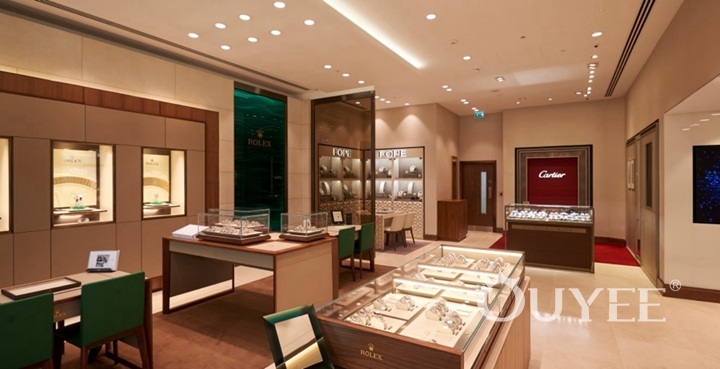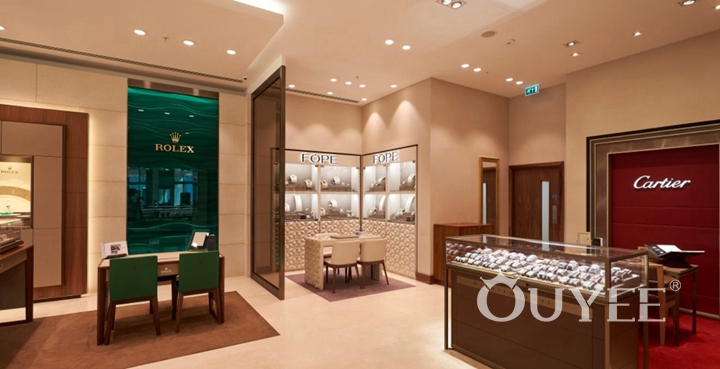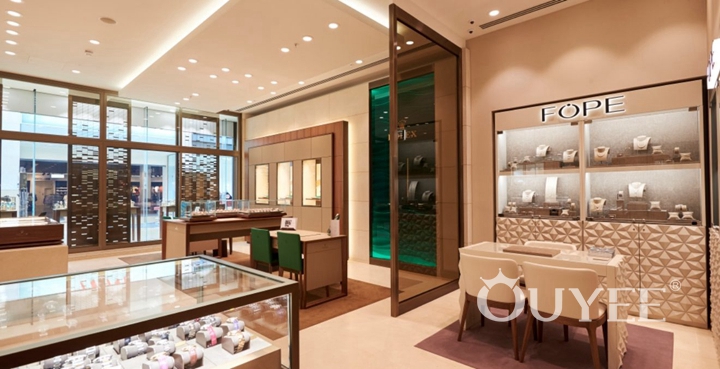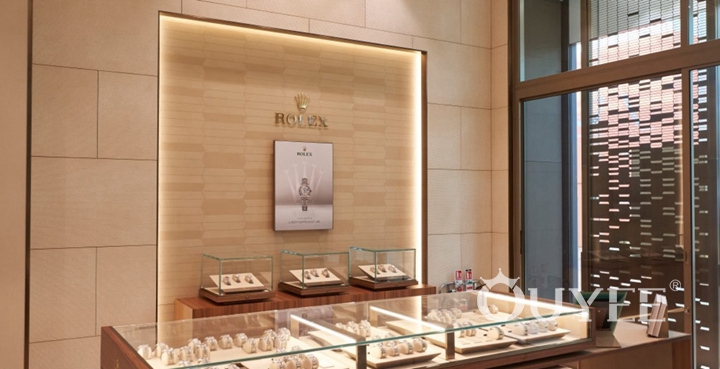When entering a retail jewelry shop, customers expect elegance. Such stores should be designed to favorably showcase the jewelry collection, allow customers to browse with ease and maintain security. A retailer should draw upon the company's business goals, vision statement and brand identity when developing store designs. All are influenced by the unique characteristics of the jewelry collection and its target market.

Develop the jewelry store layout to maximize the sales potential for each square foot. Fine jewelry inventory that includes diamonds, gemstones and precious metals will primarily require enclosed glass display cases in the overall design. Open wall shelves might be used so customers can handle the merchandise.

Plan back-office and point-of-sale spaces. The latter, where transactions are completed, are generally located close to the shop's entrance. Back-office space is where management, accounting and administrative duties are carried out. It is also where inventory is stored.

Plan security components into the store's layout, including alarms, cameras, safes and vault systems. A security firm that specializes in servicing jewelry retail stores might provide retail designs ideas for optimal security protection. Also, run the floor plan by an insurance agent experienced in servicing retail markets for recommendations related to positioning store fixtures and cameras.

Buy fixtures such as glass cabinet displays, drawer units, wall shelves and showcases. Lighting is a key design component in a jewelry store that focuses a viewer's attention on merchandise. Lighting choices include ambient, accent, shelf, case, perimeter and valance. Case lighting, which is located close to displayed objects, might be used to illuminate the inherent features of precious and semi-precious jewels.

For more information, please contact us by steve@ouyeedisplay.com, or call the 24-hour hotline: +86 13826419811

